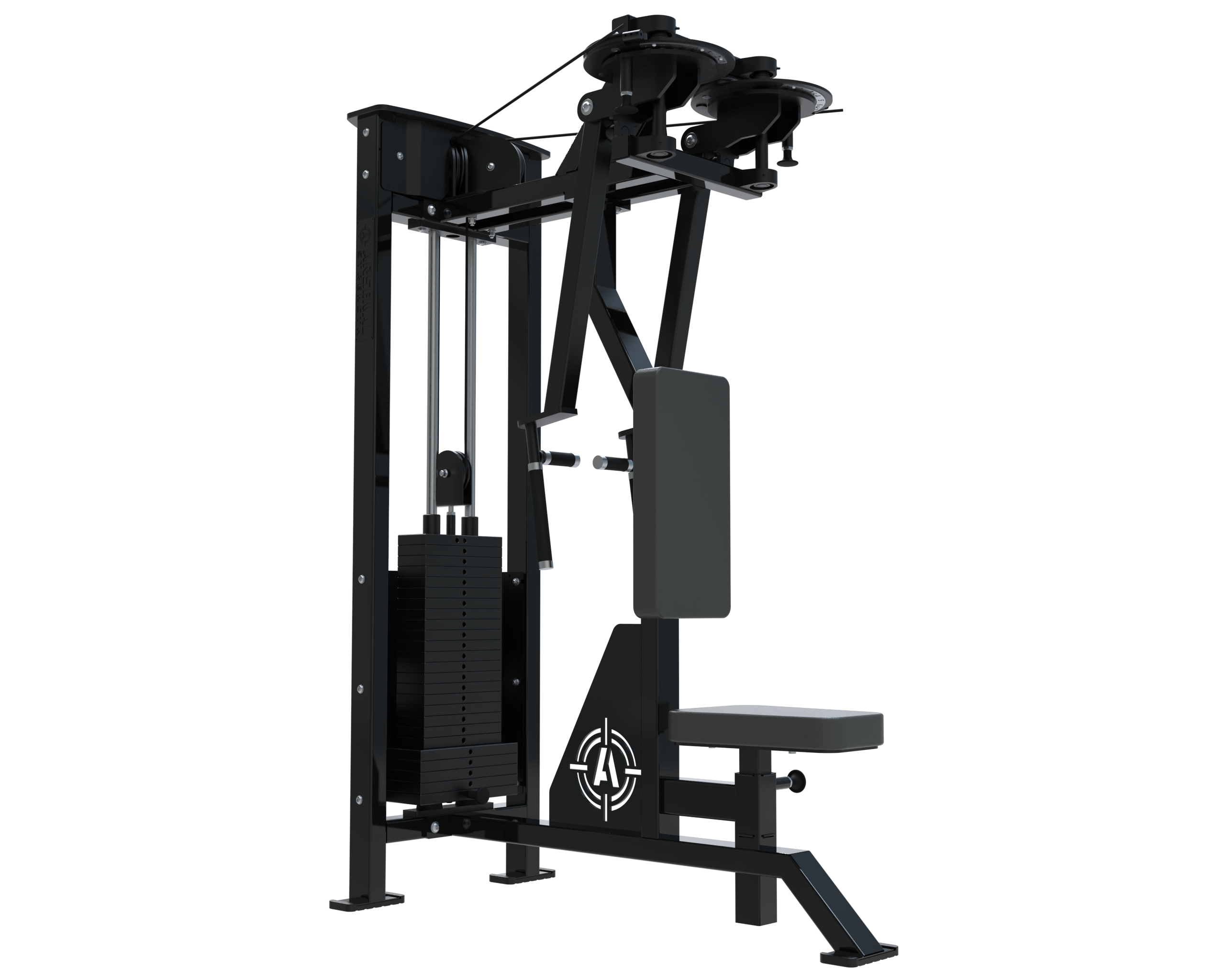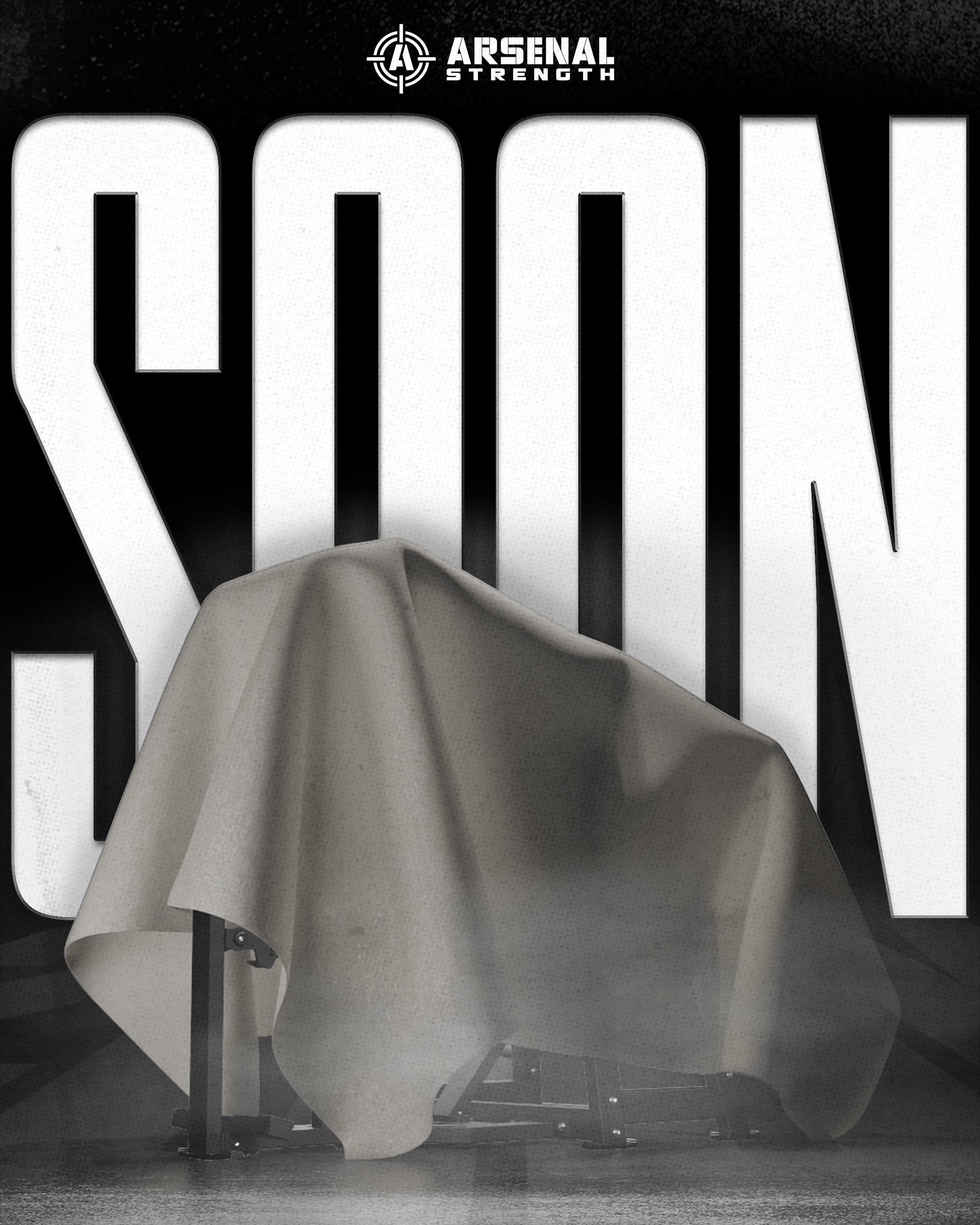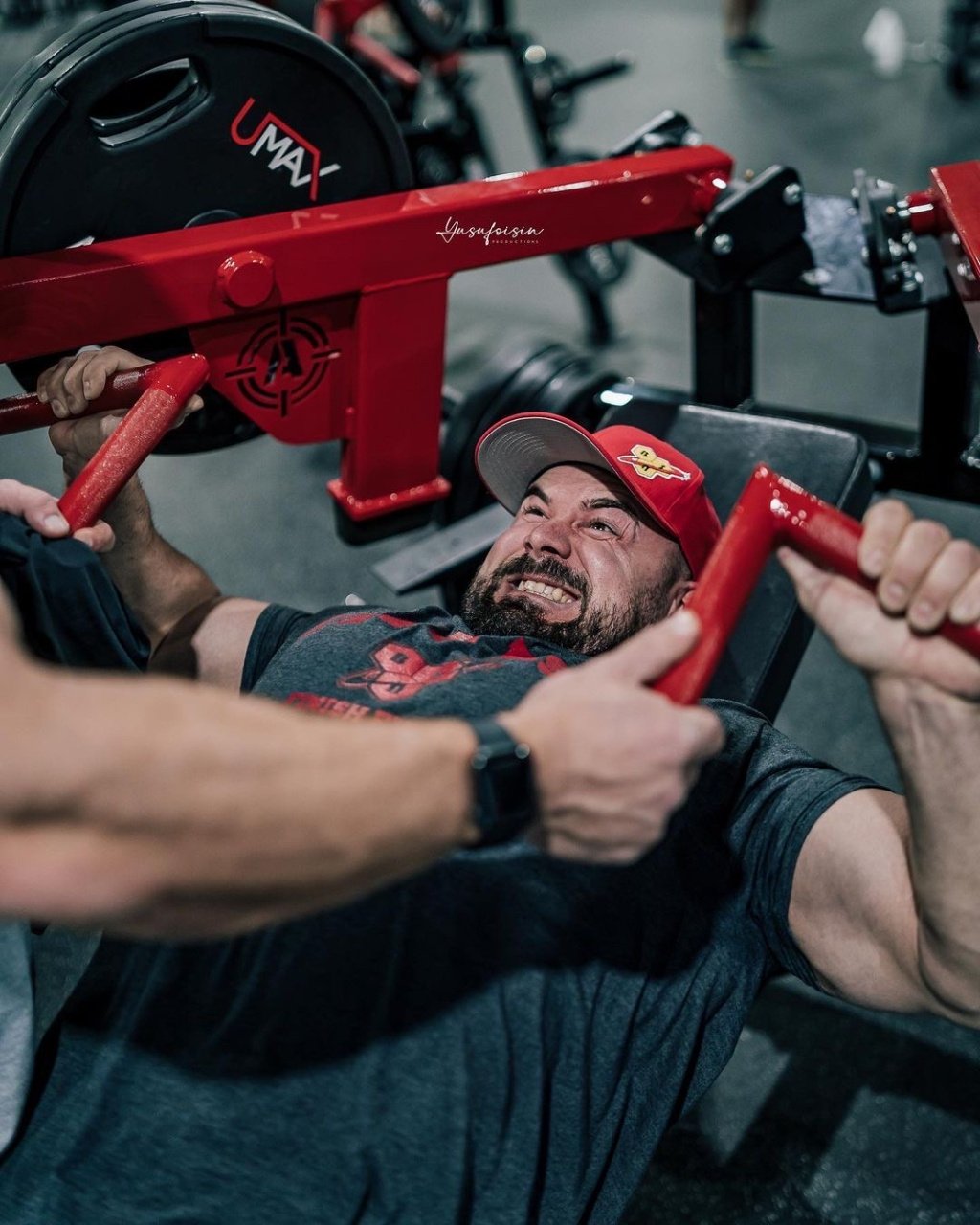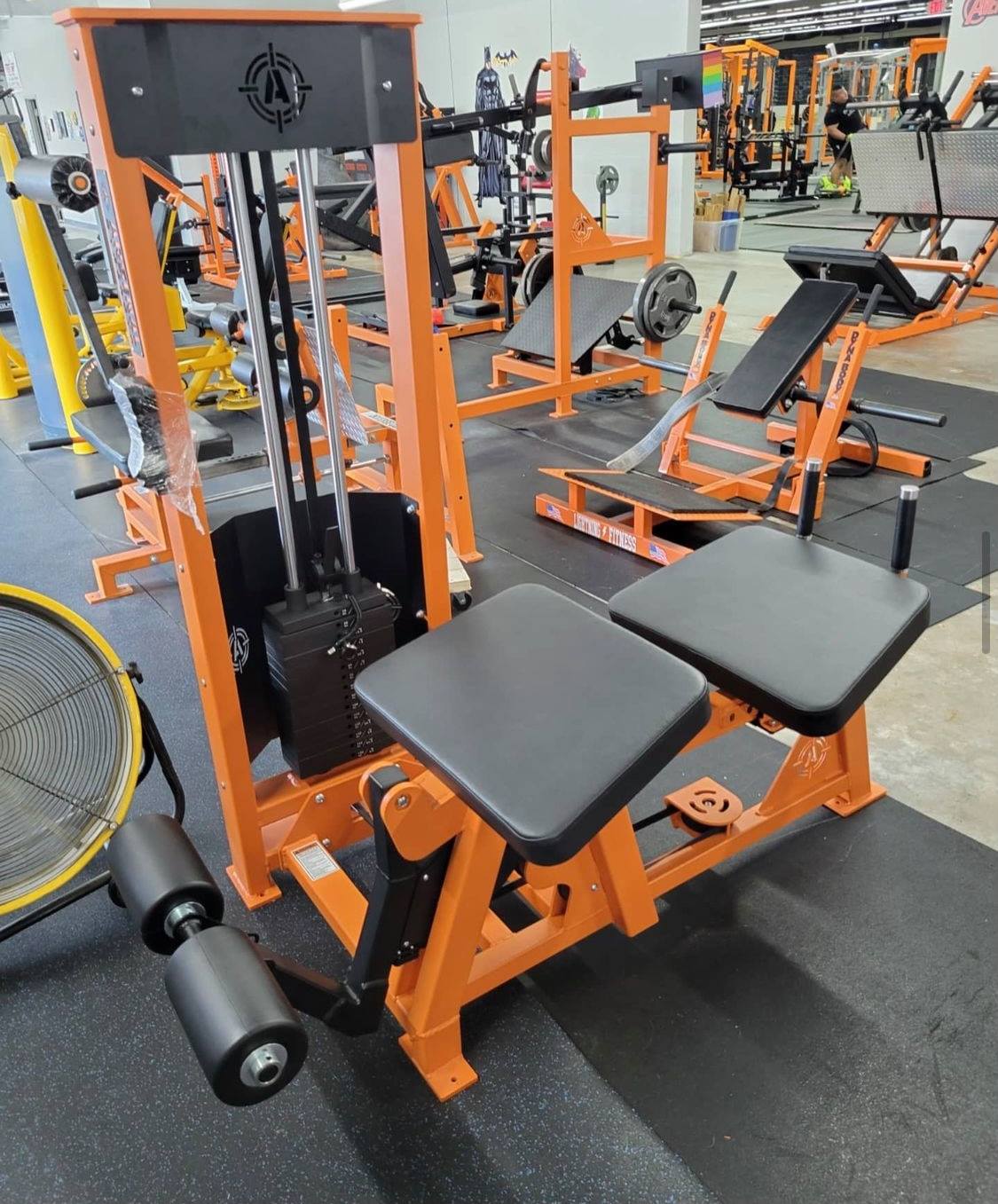Maximize Gains With The Pec Fly Rear Delt Machine
Understanding the Pec Fly Rear Delt Machine
The Pec Fly Rear Delt Machine is a versatile piece of equipment that allows users to perform both pec fly and rear delt exercises with ease. This dual-purpose functionality makes it highly favored for individuals seeking to engage various muscle groups without the need for changing stations. Its adaptable range of motion and multiple gripping options mean workouts can be tailored precisely to individual requirements.
Added features designed for user comfort include:
- An easily adjustable, gas-assisted large padded seat accommodating people of different sizes
- A counter for repetitions
- Convenient storage space on the top cap which helps maintain orderliness and accessibility during separate exercise sessions, contributing positively to facility management.
Durability is also a key attribute of this machine—it’s crafted from robust heavy gauge steel presenting not only an appealing low-profile aesthetic but also guaranteeing its stability and enduring nature. With such solid construction, it stands up well against rigorous use, making it a dependable asset in any fitness center environment.
Understanding the M-1 Selectorized Pec Fly Rear Delt Machine
The M-1 Selectorized Pec Fly Rear Delt Machine is a versatile piece of equipment that allows users to perform both pec fly and rear delt exercises with ease. This dual-purpose functionality makes it highly favored for individuals seeking to engage various muscle groups without the need for changing stations. Its adaptable range of motion and gripping options mean workouts can be tailored precisely to individual requirements.
Durability is also a key attribute of this machine—it’s crafted with heavy steel guaranteeing its stability and heavy-duty nature. With such solid construction, it stands up well against rigorous use, making it a dependable asset in any fitness center environment.
Key Muscle Groups Targeted by the Pec Fly Rear Delt Machine
The M-1 Selectorized Pec Fly Rear Delt Machine is specifically engineered to concentrate on key upper body muscle groups, contributing significantly to an even muscular build. It chiefly targets:
- The pectoralis major and minor in the chest area are vital for any movements that involve the shoulder joint
- The deltoid muscles of the shoulders, with a particular emphasis on the posterior (rear) deltoids
- Rhomboid muscles located in the upper back region
- Trapezius muscles situated across both neck and upper back
Enhancing these specific muscles can notably augment your capacity for pushing substantial objects and executing various exercises associated with the upper body.
Besides its effect on chest development, this machine also prioritizes the engagement of often-overlooked posterior deltoid muscles within many fitness regimens. Acknowledging their critical function regarding shoulder stability as well as general strength throughout the top half of our physique is essential. Routinely performing rear-delt-targeting routines aids in fostering balanced growth among shoulder components while concurrently lowering injury probabilities.
When engaging in rear delt workouts using this apparatus, there’s additional recruitment from other crucial muscles around one’s upper spine including the trapezius along with rhomboids. These muscle groupings serve important roles not just sustaining optimal bodily posture but also reinforcing overall power spanning through your torso’s higher portion — particularly evident during reverse fly maneuvers that intensely stimulate. This ensures a thoroughly comprehensive workout encompassing all relevant musculature.
Benefits of Using the Pec Fly Rear Delt Machine
The Pec Fly Rear Delt Machine offers numerous benefits, making it a worthwhile addition to any workout routine. One of the primary advantages is its ability to isolate specific muscle groups, allowing for targeted workouts that enhance muscle definition and strength. This level of isolation is particularly beneficial for those looking to strengthen the pectoralis major muscles, which are responsible for movements at the shoulder joint.
Another significant benefit is the consistent resistance and guided movement provided by the machine. Unlike free weights, which can sometimes lead to improper form and potential injuries, the Pec Fly Rear Delt Machine ensures a more controlled motion. This feature reduces the risk of injury and makes it easier for beginners to learn the correct exercise techniques.
Additionally, the machine’s design facilitates a more controlled and safe workout environment. It offers the following benefits:
- Provides a stable platform
- Reduces the risk of improper form
- Helps users maximize their muscle engagement
- Helps users achieve better results.
This combination of safety, control, and targeted muscle engagement makes the M-1 Selectorized Pec Fly Rear Delt Machine an excellent choice for anyone looking to enhance their upper body strength and muscle mass.
How to Properly Use the M-1 Selectorized Pec Fly Rear Delt Machine
To optimize the benefits and guarantee safe operation, one must correctly utilize the Pec Fly Rear Delt Machine. Begin by adjusting the machine to suit your physical proportions. This customization is key for aligning yourself properly and effectively engaging the intended muscles during exercise. Position the seat so that when you take hold of the handles, your arms are level with the ground. This posture assists in preserving proper technique while minimizing undue stress on your joints.
Select a hand placement that promotes enhanced muscle engagement while also feeling comfortable for you. Opting for a grip that feels instinctive and doesn’t lead to discomfort is crucial. For beginners, operating this equipment from a seated position can be both secure and effective since it lends stability and mitigates injury risk.
Finally, make sure to execute movements deliberately focusing attention on contracting those target muscle groups maximally will yield superior outcomes.
Common Mistakes to Avoid
It is crucial to prevent common errors when using the Pec Fly Rear Delt Machine, as they can interfere with progress and increase injury chances. Frequently, individuals perform repetitions too quickly without control, which lessens the strain on the rear deltoid muscles leading to suboptimal results and potential injuries. To fully engage the muscles and maintain safety, one should focus on executing each movement deliberately.
An often overlooked mistake is over-gripping of handles that shifts much of the effort onto trapezius muscles rather than targeting rear delts effectively. Employing a gentler hold will ensure it’s primarily your rear deltoids that are being worked out—leading to greater muscle stimulation while simultaneously decreasing chances for unwanted shrugging of shoulders. It’s equally important not to retract your shoulder blades during reverse pec deck flyes if you want optimal recruitment of those key posterior shoulder muscles.
Add on Weight to the Pec Fly Rear Delt Machine
To effectively progress and add on weight on the Pec Fly Rear Delt Machine, it is essential to progressively add on weight in small increments. This methodical increase helps build strength and muscle mass efficiently. By avoiding too much weight added too quickly, you can prevent injuries and allow your muscles time to adjust to the heightened challenge.
As you continue to add on weight, maintaining proper form becomes crucial. Keep your shoulders pressed downward and retracted. Resist the urge to shrug them when faced with heavier weights. Executing each rep at a slow and controlled speed will amplify tension in the muscles involved, thereby boosting your workout’s impact on building rear deltoid definition.
Effective Exercises on the Pec Fly Rear Delt Machine
The Pec Fly Rear Delt Machine is a versatile piece of equipment that allows for a range of movement designed to target the pectoral muscles and rear deltoids, effectively adding variety to your workout regimen. By concentrating on these specific muscle groups, performing exercises with this machine can boost muscular balance and contribute positively to posture enhancement.
Executing two key movements on this apparatus—the pec fly and the rear delt fly—brings distinct advantages and requires unique techniques. Each exercise contributes significantly to strengthening its respective targeted areas.

Pec Fly Exercise
To execute the pec fly workout correctly, adhere to these instructions:
- Set up your seat so that when you reach out for the handles, your arms are aligned with your shoulders.
- With a neutral grip, hold onto the handles and make sure your back is pressed tightly against the pad.
- Stretch out your arms sideways while maintaining a minor elbow bend.
- Converge the handles in front of you smoothly and steadily.
- At full contraction, pause for a short duration
- Gradually revert to the initial position.
Engaging in this exercise effectively targets and fortifies chest muscles specifically pectoralis major. It’s crucial to keep elbows slightly bent during this movement to bypass undue joint strain ensuring safer execution and augmented muscle activation. Adhering meticulously to these guidelines enhances effectiveness of performing pec flys thus promoting enhanced upper body muscularity.
Rear Delt Fly Exercise
When executing the rear delt fly:
- Adjust the seat and handles so you can sweep your arms back in a broad arc, while keeping your elbows lightly bent.
- Sit facing towards the pad and hold onto the handles using an overhand grip.
- Extend your arms out to both sides with that gentle elbow bend, drawing your shoulder blades together as they open.
- Maintain control throughout this movement by smoothly resisting against the weight when returning to initial position.
This particular exercise targets strengthening of the rear delts, which is vital for enhancing shoulder stability and fortifying upper back muscles. Preserving a straight spine without too much arching is essential for maximizing effectiveness while ensuring safety during execution of this movement. Adding this move into regular training schedules could greatly improve muscle balance as well as postural alignment.
Pec Fly Rear Delt Machine vs. Free Weights
When assessing the Pec Fly Rear Delt Machine against free weights, both show distinct advantages and disadvantages. Utilizing free weights such as dumbbells can enhance the motion range and offer more freedom at wrists and shoulders, which may reduce stress on joints. They also recruit stabilizer muscles that machines might overlook, promoting better muscle development and coordination.
Nevertheless, there are downsides to using free weights. Positioning heavy dumbbells for movement could prove cumbersome, especially for lower repetition workouts. This challenge raises injury risks compared to machines. Conversely, the Pec Fly Rear Delt Machine provides a steady movement pattern with uniform resistance throughout an exercise — factors contributing to safer execution often preferred by many individuals.
In terms of versatility and space consumption considerations arise: whereas free weights lend themselves well to a broad spectrum of exercises beyond pec flyes or rear delt movements alone—machines typically occupy more room but grant novices an environment less conducive to injuries due to their stable nature during use.
Enhancing Your Workout Routine
To maximize your fitness regimen, integrating the Pec Fly Rear Delt Machine is essential. Here’s an effective strategy:
- Initiate your week with high-intensity exercises.
- Proceed to moderate-level exercises midweek.
- Conclude the week with low-intensity workouts to control fatigue and minimize injury risks.
- Target rear delt exercises between 3 and 6 times per week.
- Incorporate a variety of intensity levels and repetition ranges.
In order to boost your program even more, incorporate a diverse array of rear delt routines into your weekly workout plan—maintain this variety at around 2-5 distinct forms such as barbell face pulls or cable variations performed at varying strength levels each session. By including machine rear delts and dumbbell lateral raises for the posterior shoulder region, you ensure thorough muscle activation leading to symmetrical muscle growth.
Persistently presenting new challenges through varied movement and intensities can help sustain muscular development while avoiding performance plateaus. Maintaining advancement in one’s physical training journey ensures that muscles become more defined and robust, thereby heightening both efficiency and outcomes from exercise sessions overall.
Choosing the Right Pec Fly Rear Delt Machine for Your Gym
When choosing the ideal Pec Fly Rear Delt Machine for your fitness facility, certain essential attributes should be taken into account. These include:
- A variety of grip options
- Customizable motion range to suit user needs
- Design that ensures comfort across a broad spectrum of body types
- A fully shielded weight stack for safety and aesthetics
- Construction with robust heavy-duty steel
These elements enhance the machine’s longevity and signify its quality, affirming it as a sound investment for any gym due to meticulous attention to details.
The standard weight configuration is typically 200 pounds featuring both 10-pound and 15-pound plates, offering sufficient resistance levels suitable for different strengths. Important too are dimensions and recommended heights: average machines stand at approximately 57.1 inches in length by 57.6 inches in width by 78.1 inches in height while being accessible to users ranging from a height of 4 feet 11 inches up to those standing at 6 feet tall. This guarantees inclusivity ensuring most individuals can enjoy an efficient exercise experience on this equipment.
Maintaining Your Pec Fly Rear Delt Machine
To ensure longevity and safe use of the Pec Fly Rear Delt Machine, regular maintenance is crucial. Regularly check and tighten any loose bolts or screws to ensure safety and stability. Inspect cables and pulleys for any signs of wear or damage, and replace them as needed to prevent accidents.
To keep your machine in good working condition, follow these maintenance tips:
- Lubricate the moving parts periodically to reduce friction and prevent wear, ensuring smooth operation.
- Keep the machine clean by wiping down surfaces after each use to prevent the build-up of sweat and grime.
- Check the seat and backrest padding regularly and replace them if they show signs of excessive wear or damage.
By following these tips, you can prolong the lifespan of your machine and ensure optimal performance, allowing you to share its benefits with others for a longer time.
Following these maintenance tips will keep your machine in top condition and ready for every workout.
To summarize, the Pec Fly Rear Delt Machine stands as an efficient and multifaceted apparatus that is instrumental in bolstering upper body strength along with enhancing muscle contour. It zeroes in on pivotal muscles including the pectoralis major, rear deltoids, trapezius muscles, and rhomboid muscles to offer a holistic exercise regimen conducive to equilibrated muscular growth. The machine’s adjustable attributes paired with its straightforward operational mechanisms render it accommodating for individuals across various fitness stages and physical proportions.
Employment of this device serves not just to pinpoint particular muscle clusters, but also guarantees consistent opposition as well as movement precision which minimizes chances of sustaining injuries. Adhering strictly to correct usage procedures while maintaining routine upkeep are essential steps for optimizing both its functional advantages and service life span. By integrating the use of the Pec Fly Rear Delt Machine into one’s training schedule and following accompanying instructions, considerable improvements can be achieved thereby propelling your athletic ambitions forward dramatically.
Frequently Asked Questions Aboout the Pec Fly Rear Delt Machine
What muscles does the Pec Fly Rear Delt Machine target?
The Pec Fly Rear Delt Machine mainly focuses on the chest’s pectoralis muscles and the rear deltoids, simultaneously involving upper back muscles such as the trapezius and rhomboids.
How do I adjust the Pec Fly Rear Delt Machine for my height?
Ensure that when you grip the handles, your arms align parallel to the floor by setting the seat height appropriately. This positioning is crucial for correct alignment and will effectively engage the muscles.
What are the benefits of using the Pec Fly Rear Delt Machine over free weights?
Using the Pec Fly Rear Delt Machine over free weights offers consistent resistance, controlled movements to reduce the risk of injury, and is beginner-friendly for targeted muscle isolation.
How often should I perform exercises on the Pec Fly Rear Delt Machine?
It is advisable to engage in workouts utilizing the Pec Fly Rear Delt Machine anywhere from three to six times weekly if you aim for optimal results.
For superior results, it’s important to mix up the levels of intensity and number of repetitions.
What maintenance is required for the Pec Fly Rear Delt Machine?
To ensure safety and durability of the Pec Fly Rear Delt Machine, consistently tighten any bolts that have loosened, examine cables and pulleys for wear or damage, lubricate all parts in motion regularly, and maintain cleanliness of the machine.
Additional Rear Delt FLy and Pec Deck Resources:






